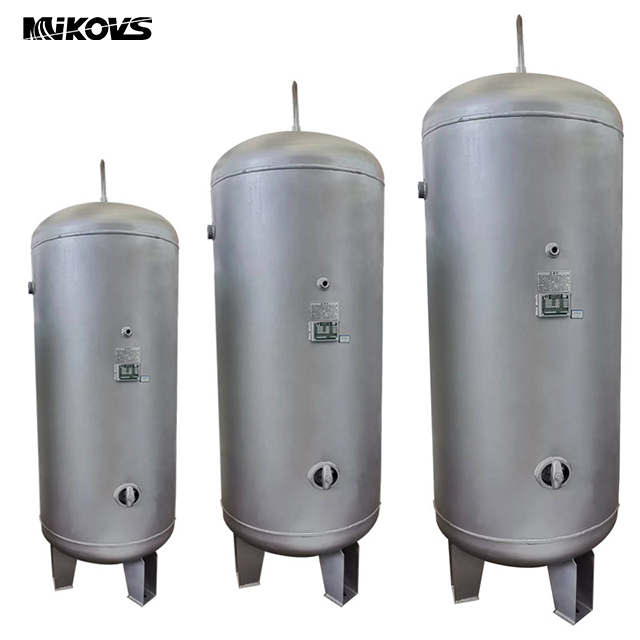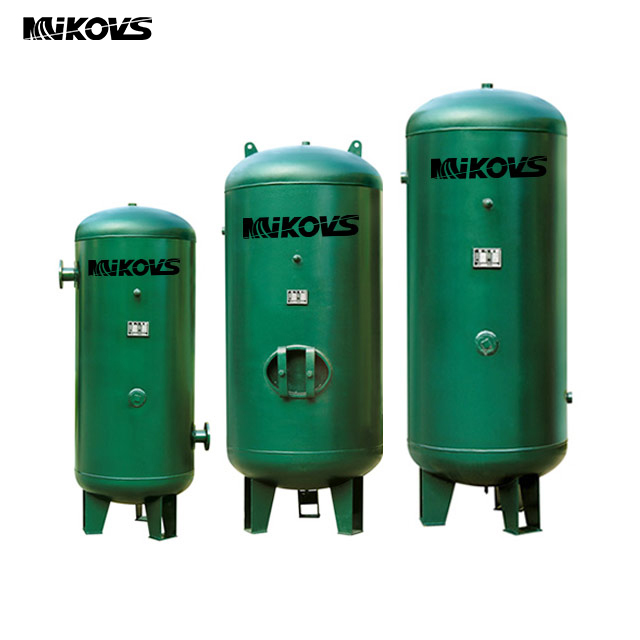14 Taboos for Installing Valves
Taboo 1
Water pressure test shall be carried out at negative temperature in winter construction. Consequence: Because the pipe freezes quickly during the water pressure test, the pipe is frozen. Measures: Try to carry out water pressure test before winter, and blow off the water after the pressure test, especially the water in the valve must be removed, otherwise the valve will freeze and crack. When the water pressure test must be carried out in winter, it should be carried out at a positive indoor temperature, and the water should be blown clean after the pressure test. When the water pressure test cannot be carried out, compressed air can be used for the test.
Taboo II
The pipeline system was not washed carefully before completion, and the flow rate and speed could not meet the requirements of pipeline washing. Even the water pressure strength test is used to drain water instead of flushing. Consequence: The water quality can’t meet the operation requirements of the pipeline system, which often leads to the reduction or blockage of the pipeline section. Measures: Flush with the maximum design flow rate in the system or the water flow rate not less than 3m/s.. It shall be deemed as qualified if the color and transparency of the discharged water are consistent with the color and transparency of the inlet water visually.
Sewage, rainwater and condensate pipes will be concealed without water closing test. Consequence: It may cause water leakage and loss to users. Measures: The closed water test shall be checked and accepted in strict accordance with the specifications. Underground burial, ceiling, pipe room and other concealed sewage, rainwater, condensate pipes, etc. should be ensured to be impervious.
Taboo 4 During the hydraulic strength test and leak test of pipeline system, only the changes of pressure value and water level are observed, and the leakage inspection is not enough. Consequence: The pipeline system leaks after operation, which affects the normal use. Measures: When the pipeline system is tested according to the design requirements and construction specifications, in addition to recording the pressure value or water level change within the specified time, it is especially necessary to carefully check whether there is any leakage problem. Taboo 5 Ordinary valve flanges for butterfly valve flanges. Consequences: The size of butterfly valve flange is different from that of ordinary valve flange, and some flanges have small inner diameter, while the disc of butterfly valve is large, resulting in failure to open or hard opening, thus damaging the valve. Measures: The flange should be machined according to the actual size of the butterfly valve flange. There are no reserved holes and embedded parts in the construction of building structure, or the reserved holes are too small in size and the embedded parts are not marked. Consequence: During the construction of the heating and sanitation project, the building structure is chiseled, and even the reinforced bar is cut off, which affects the safety performance of the building. Measures: Be familiar with the construction drawings of the heating and sanitation project carefully, and actively cooperate with the construction of building structures to reserve holes and embedded parts according to the installation needs of pipelines and supports and hangers, with specific reference to the design requirements and construction specifications. Taboo 7 When welding pipes, the staggered joints of the pipes are not on a central line after butt joint, leaving no gap at butt joint, and the thick-walled pipes are not chamfered, so the width and height of the weld do not meet the requirements of construction specifications. Consequence: the pipe dislocation is not in a central line, which directly affects the welding quality and visual quality. No gap is left in the butt joint, the thick-walled pipe does not shovel the groove, and the welding can not meet the strength requirements when the width and height of the weld do not meet the requirements. Measures: After welding the butt joint of pipes, the pipes should not be staggered, and should be on a central line, with gaps left in the butt joint. Thick-walled pipes should be chamfered, and the width and height of the weld should be welded according to the requirements of the specification.
Taboo 8 The pipeline is directly buried in frozen soil and untreated loose soil, and the spacing and position of pipeline piers are improper, even in the form of dry bricks. Consequence: The pipeline is damaged in the process of backfill compaction due to unstable support, resulting in rework and repair. Measures: The pipeline shall not be buried in frozen soil or untreated loose soil, the spacing of piers shall meet the requirements of construction specifications, and the supporting pad shall be firm, especially at the pipeline interface, and shall not bear shear force. Brick piers should be built with cement mortar to ensure integrity and firmness. Taboo 9 The material of the expansion bolt for fixing the pipeline bracket is inferior, the aperture for installing the expansion bolt is too large, or the expansion bolt is installed on a brick wall or even a light wall. Consequences: the pipeline bracket is loose, and the pipeline is deformed or even falls off. Measures: qualified products must be selected for the expansion bolts, and if necessary, samples should be taken for test inspection. The hole diameter for installing the expansion bolts should not be greater than 2mm, and the expansion bolts should be applied to concrete structures. Taboo 10 The flange and gasket of pipeline connection are not strong enough, and the connecting bolts are short or thin in diameter. Rubber pads are used for heating pipes, asbestos pads are used for cold water pipes, and double-layer pads or inclined pads are used, and flange pads protrude into the pipes. Consequences: the flange joint is not tight, or even damaged, resulting in leakage. The flange gasket protrudes into the pipe, which will increase the water flow resistance. Measures: Flange and gasket for pipeline must meet the requirements of pipeline design working pressure. The flange gasket of heating and hot water supply pipeline should be rubber asbestos gasket; Rubber gasket should be used for flange gasket of water supply and drainage pipeline. Flange gasket shall not protrude into the pipe, and its excircle should reach the flange bolt hole. Bevel pads or several gaskets shall not be placed in the middle of the flange. The diameter of the bolt connecting the flange should be less than 2mm, and the length of the bolt rod protruding from the nut should be 1/2 of the thickness of the nut. Taboo 11 Valve installation method is wrong. For example, the water (steam) flow direction of stop valve or check valve is opposite to the sign, the valve stem is installed downward, the check valve installed horizontally is installed vertically, the handle of open-stem gate valve or butterfly valve has no opening and closing space, and the valve stem of concealed valve does not face the inspection door. Consequences: Valve failure, switch maintenance is difficult, and valve stem downward often causes water leakage. Measures: Install the valve in strict accordance with the valve installation instructions. Open-stem gate valves should have sufficient opening height for valve stem extension. Butterfly valves should fully consider the rotation space of the handle, and all kinds of valve stems should not be lower than the horizontal position, let alone downward. The concealed valve should not only be equipped with an inspection door to meet the needs of valve opening and closing, but also the valve stem should face the inspection door.
Taboo 12 The specifications and models of installed valves do not meet the design requirements. For example, the nominal pressure of the valve is less than the system test pressure; When the diameter of the water supply branch pipe is less than or equal to 50mm, the gate valve is used; The dry and vertical pipes of hot water heating adopt stop valves; The suction pipe of fire pump adopts butterfly valve. Consequence: it will affect the normal opening and closing of the valve and adjust the functions such as resistance and pressure. Even cause the valve to be damaged and forced to be repaired during the system operation. Measures: Be familiar with the application scope of various valves, and select the specifications and models of valves according to the design requirements. The nominal pressure of the valve shall meet the requirements of system test pressure. According to the requirements of construction specifications: the diameter of water supply branch pipe is less than or equal to 50mm, and the stop valve should be adopted; When the pipe diameter is greater than 50mm, the gate valve should be adopted. Gate valves should be used for dry and vertical control valves of hot water heating, and butterfly valves should not be used for suction pipes of fire pumps.
Taboo 13 Failing to carry out necessary quality inspection before valve installation. Consequences: The valve switch is not flexible during the system operation, and the valve is not closed properly, resulting in the phenomenon of water leakage (steam), resulting in rework and repair, and even affecting the normal water supply (steam). Measures: Before valve installation, pressure strength and leak test should be done. The test shall be conducted by sampling 10% of each batch (same brand, same specification and same model) and not less than one. For closed-circuit valves installed on the main pipe to cut off, strength and tightness tests should be made one by one. The valve strength and leak test pressure shall comply with the Code for Acceptance of Construction Quality of Building Water Supply and Drainage and Heating Engineering (GB 50242-2002). Taboo 14 The main materials, equipment and products used in construction are short of technical quality appraisal documents or product certificates that meet the current national or ministerial standards. Consequences: the project quality is unqualified, and there are hidden dangers of accidents, so it cannot be delivered on schedule and must be reworked and repaired; Delayed construction period and increased labor and material input. Measures: the main materials, equipment and products used in water supply and drainage and heating and sanitation projects should have technical quality appraisal documents or product certificates that meet the current standards issued by the state or the Ministry; The product name, model, specification, national quality standard code, factory date, manufacturer’s name and place, and factory product inspection certificate or code shall be indicated.
The following are other products of our company





